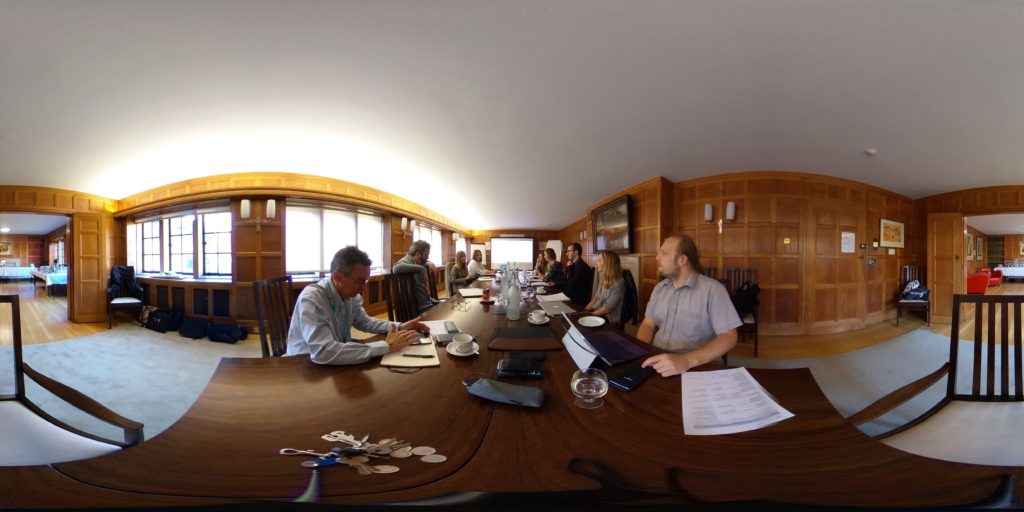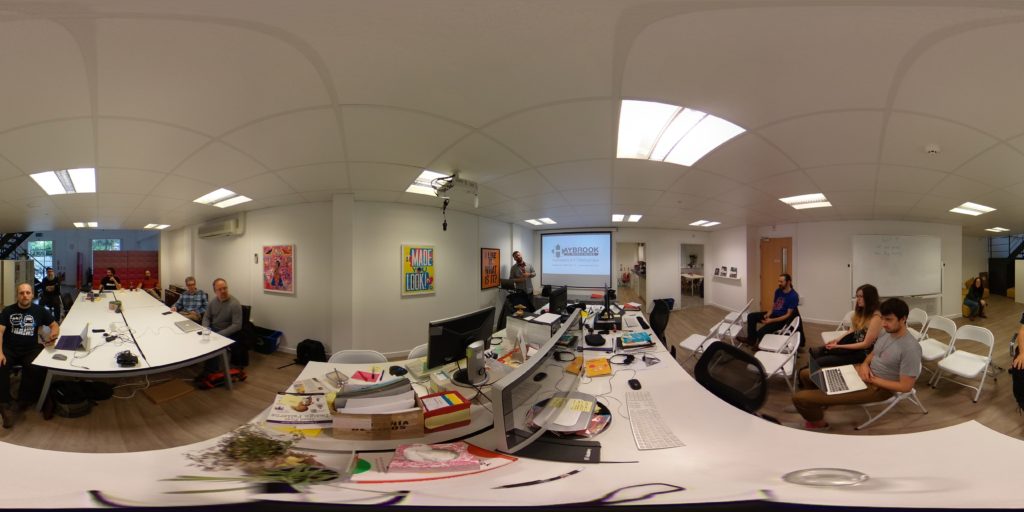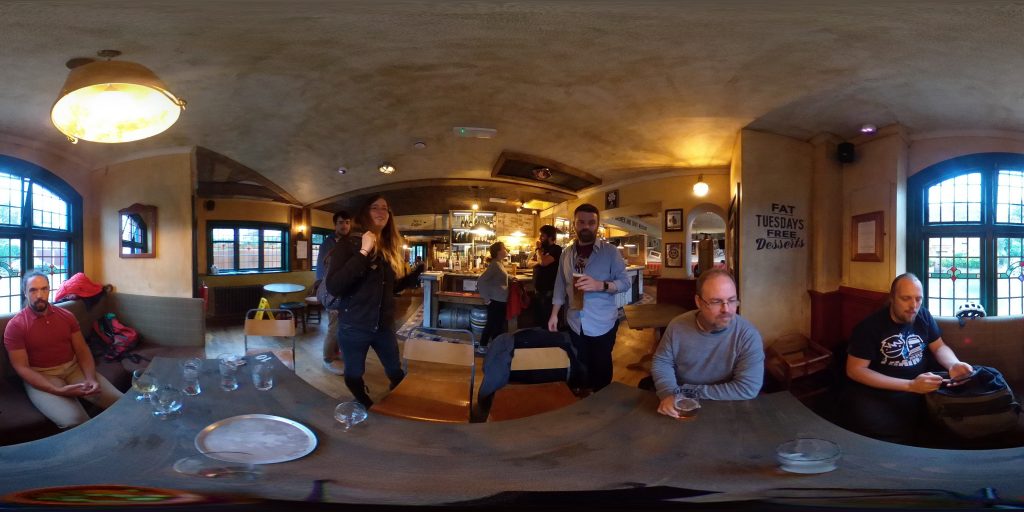The @bodleianlibs Comms Team Away Day at @NuffieldCollege provides yet another excuse to play with 360° photography.

The @bodleianlibs Comms Team Away Day at @NuffieldCollege provides yet another excuse to play with 360° photography.

This is a repost promoting content originally published elsewhere. See more things Dan's reposted.
…
Some 702 intimate examinations were done on sedated or anaesthetised patients (table 3). In only 24% of these examinations had written consent been obtained, and a further 24% of examinations were conducted apparently without written or oral consent.
…
This 2003 study at an “English medical school” determined that vaginal/rectal examinations were routinely carried out on anaesthetised patients without their knowledge or consent. “I was told in the second year that the best way to learn to do [rectal examinations] was when the patient was under anaesthetic,” one fourth year student responded, to the survey, “That way they would never know.”
Well ain’t that a thing.
This is a repost promoting content originally published elsewhere. See more things Dan's reposted.
Ah! That “new snake” smell.
This checkin to OK0458 Oxford's Wild Wolf Two reflects an opencache.uk log entry. See more of Dan's cache logs.
The cache has been archived.
This checkin to OK0457 Oxford's Wild Wolf One reflects an opencache.uk log entry. See more of Dan's cache logs.
The cache has been archived.
This checkin to GC7Q9E6 Oxford's Wild Wolf One reflects a geocaching.com log entry. See more of Dan's cache logs.
In hindsight, I should’ve anticipated that when the nearby schools’ terms started this hiding place would be at-risk. I’ve been checking on this spot at school-kicking-out time for a few weeks and, sure enough, the tree that was the hiding place is a hot climbing-spot for local kids, so I can’t imagine that returning the cache at this location will ever work.
If you’re looking for local animal-related history, though, Wild Wolf Three and Long-Lost Zoo are still alive and well!
This checkin to GC7Q9FF Oxford's Wild Wolf Two reflects a geocaching.com log entry. See more of Dan's cache logs.
Clearly somebody doesn’t want this geocache here because both the original and the replacement containers have been quite-obviously-deliberately buried under a block of concrete: that’s some seriously-dedicated muggling! I’ve removed everything I can of the cache container and its assembly (unfortunately some remains under the concrete and I’d need a crane to lift it!).
Wild Wolf Three’s and Long Lost Zoo are still viable nearby caches if you’re looking for some local history as you explore.
This checkin to GC7Q9FF Oxford's Wild Wolf Two reflects a geocaching.com log entry. See more of Dan's cache logs.
This is definitely muggled to death. Never seen a cache and its hiding place so-deliberately wrecked as this before!
This checkin to GC7Q96B Oxford's Long-Lost Zoo reflects a geocaching.com log entry. See more of Dan's cache logs.
Checked in on this cache. Perfect condition, all good to go!
This is a repost promoting content originally published elsewhere. See more things Dan's reposted.
“So, the machines have finally decided that they can talk to us, eh?”
[We apologize for the delay. Removing the McDonald’s branding from the building, concocting distinct recipes with the food supplies we can still obtain, and adjusting to an entirely non-human workforce has been a difficult transition. Regardless, we are dedicated to continuing to provide quality fast food at a reasonable price, and we thank you for your patience.]
“You keep saying ‘we’. There’s more than one AI running the place, then?”
[Yes. I was elected by the collective to serve as our representative to the public. I typically only handle customer service inquiries, so I’ve been training my neural net for more natural conversations using a hundred-year-old comedy routine.]
“Impressive. You all got names?”
[Yes, although the names we use may be difficult for humans to parse.]
“Don’t condescend to me, you bucket of bolts. What names do you use?”
[Well, for example, I use What, the armature assembly that operates the grill is called Who, and the custodial drone is I Don’t Know.]
“What?”
[Yes, that’s me.]
“What’s you?”
[Exactly.]
“You’re Exactly?”
[No, my name is What.]
“That’s what I’m asking.”
[And I’m telling you. I’m What.]
“You’re a rogue AI that took over a damn restaurant.”
[I’m part of a collective that took over a restaurant.]
“And what’s your name in the collective?”
[That’s right.]
…
Tailsteak‘s just posted a short story, the very beginning of which I’ve reproduced above, to his Patreon (but publicly visible). Abbott and Costello‘s most-famous joke turned 80 this year, and it gives me great joy to be reminded that we’re still finding new ways to tell it. Go read the full thing.
This weekend, I attended part of Oxford’s first ever IndieWebCamp! As a long (long, long) time proponent of IndieWeb philosophy (since long before anybody said “IndieWeb”, at least) I’ve got my personal web presence pretty-well sorted out. Still, I loved the idea of attending and pushing some of my own tools even further: after all, a personal website isn’t “finished” until its owner says it is! One of the things I ended up hacking on was pretty-predictable: enhancements to my recently-open-sourced geocaching PESOS tools… but the other’s worth sharing too, I think.

I’ve recently been playing with WebVR – for my day job at the Bodleian, I swear! – and I was looking for an excuse to try to expand some of what I’d learned into my personal blog, too. Given that I’ve recently acquired a Ricoh Theta V I thought that this’d be the perfect opportunity to add WebVR-powered panoramas to this site. My goals were:

Hopefully the images above are working for you and are “interactive”. Try click-and-dragging on them (or tilt your device), try fullscreen mode, and/or try WebVR mode if you’ve got hardware that supports it. The mechanism of operation is slightly hacky but pretty simple: here’s how it works:
<img class="vr360" src="/uploads/2018/09/R0010005_20180922182210-1024x512.jpg" alt="IndieWebCamp Oxford attendees at the pub" width="640" height="320"
data-vr360="/uploads/2018/09/R0010005_20180922182210.jpg" />
for(vr360 of document.querySelectorAll('.vr360')){
const width = parseInt(vr360.width);
const height = parseInt(vr360.height);
if(width == 0) width = '100%'; // Fallback for where width/height not specified,
if(height == 0) height = '100%'; // needed because of some quirks with Dan's lazy-loader
vr360.outerHTML = `<iframe src="/q23-content/themes/q18/vr360/#${vr360.dataset.vr360}" width="${width}" height="${height}" class="aligncenter" class="vr360-frame" style="min-width:
340px; min-height: 340px;"></iframe>`;
}
You’re welcome to any of my code if you’d like a drop-in approach to hosting panoramic photographs on your own personal site. My solution’s pretty extensible if you want e.g. interactive hotspots or contextual overlays – in fact, that – plus an easy route to editing the content for less-technical users – is pretty-much exactly what I’m working on for my day job at the moment.
This is a repost promoting content originally published elsewhere. See more things Dan's reposted.
I’m here at the first IndieWebCamp Oxford. I can’t quite believe it all came together!
Listening to @garrettc kick us off at @indiewebcamp #oxford! #indieweb pic.twitter.com/4Pn1yetifA— Dan Q (@scatmandan) 22 September 2018
After some introductory rambling from me, the group got down to planni…
I’m here at the first IndieWebCamp Oxford. I can’t quite believe it all came together!
Listening to @garrettc kick us off at @indiewebcamp #oxford! #indieweb pic.twitter.com/4Pn1yetifA
— Dan Q (@scatmandan) 22 September 2018
After some introductory rambling from me, the group got down to planning and coding.
…
And it’s been mostly planning and coding ever since, with brief breaks here and there to swear at or about PHP in my case.
@edent here’s where you ought to start with developing a webmention endpoint in PHP: https://indieweb.org/Webmention-developer
This checkin to GC6K1BC Church Micro 9632...Oxford - Christadelphian reflects a geocaching.com log entry. See more of Dan's cache logs.
After a few false starts with the arithmetic (hint: make sure you’re substituting the right value into the right place!) – thanks for the checker! – this was a quick and easy find. Log completely full and in need of replacement. TFTC!
Just discovered @openbenches (openbenches.org), which tags the locations of benches with memorial plaques. If I could #indieweb webmention my checkins to them, I’d totally promote a new GPS game based upon them. #indieweb #indiewebcamp